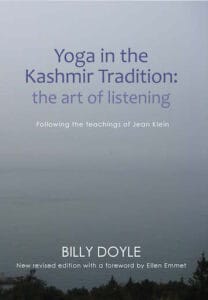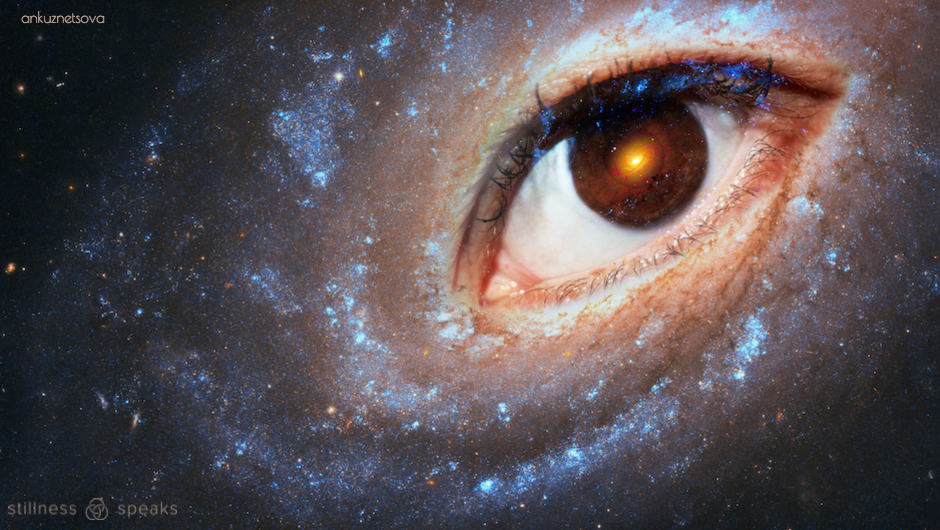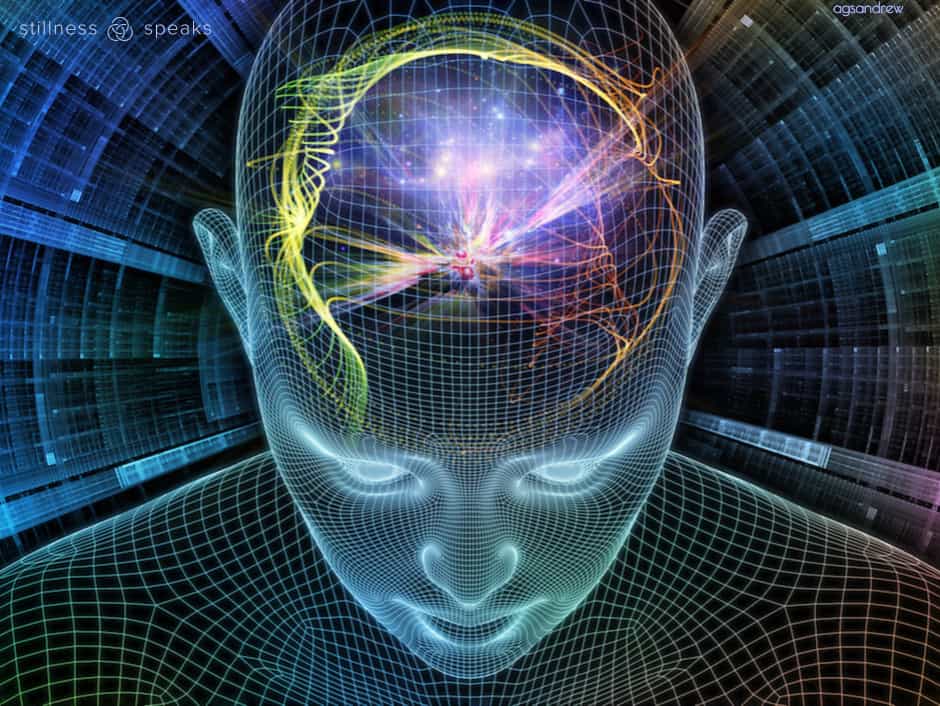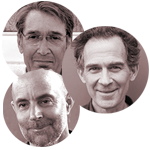advaita: “… Enquiring within ‘Who is the seer?’ I saw the seer disappear leaving That alone which stands forever …” ~ Ramana Maharshi
advaita: “… When you go beyond awareness, there is a state of non-duality, in which there is no cognition, only pure being. In the state of non-duality, all separation ceases …” ~ Nisargadatta Maharaj
At some stage, on the self realization journey, certain fundamental truths become evident: Our True nature is oneness … and that this essential truth is also at the heart of all traditions:
“Real freedom is the inseparable oneness with the universe …” ~ Sri Chinmoy
“The God who existed before any religion counts on you to make the oneness of the human family known and celebrated.” ~ Desmond Tutu
“The first peace, which is the most important, is that which comes within the souls of people when they realize their relationship, their oneness, with the universe …” ~ Black Elk
Advaita or nonduality classically “comes from” India but this core truth of “oneness” is evident in all traditions regardless of how it may be expressed – as seen from the quotes above … and the quotes below: from two contemporary nonduality teachers (Adya & Francis) and one of the three great titans of advaita teaching (A K Menon):
{Nonduality} “… means there is just One Self, without a difference or gap between the profound revelation of Oneness and the way it is perceived and lived every moment of life …” ~ Adyashanti
“… Advaita is not a philosophy or a religion. Non-duality is an experience in which there is no separation between subject and object; a “me” and the rest of the universe; a “me” and God …” ~ Francis Lucille
“… consciousness is always present, throughout experience, as the complete reality of all physical and mental objects that appear in the entire universe …” ~ Sri Atmananda Krishna Menon
The core realization that ” I am consciousness” is underscored by one of the oldest spiritual texts from India: “All that is seen and led by consciousness, and is established in consciousness. The world is seen and led by consciousness. Consciousness is the foundation. Consciousness is all there is. ~ Aitareya Upanishad
So, today, we consider Billy Doyle’s condensation of Advaita (including Jean Klein’s pertinent remarks) … as part of our multi-part series taking a deep dive into Billy’s 2019 book: Yoga In The Kashmir Tradition: The Art Of Listening – Following The Teachings of Jean Klein. This Part 2 offers excerpt of the entire chapter titled Advaita Vedanta …
… in part 1 we offered the “stage setting” Foreword by Ellen Emmet and Billy’s Introduction …
{All italicized text below is from Billy’s book and is published here with the publisher New Sarum Press‘ generous permission. Scroll to the bottom for a free downloadable Table of Contents.}
So, here is Billy on advaita …
Advaita Vedanta
At the core of the great religious traditions there is the understanding of the oneness of the whole of life. In the Indian tradition this is known as advaita, which means ‘not two’. This truth lies at the heart of the Upanishads, and was later expounded by Sri Shankaracarya in the ninth century. Indeed, this is a current running through the whole of Indian culture.
Advaita asks us to question what is real, to question the common-sense view that we are separate entities, each body-mind being distinct from other body-minds and from the world. It asks: What is our essential nature? The body and mind are always changing. Is there not something that is beyond the flux of time? Is there not something beyond the mind? To recognise change there must be something in us that is changeless. What is changeless in me? Is it not the sense of presence, the sense of knowing? I know myself, I know the world, but the real question is: Who is the knower?
We don’t cease to be when there is no thought; we still know that we are, but we generally only know ourselves in relation to objects, such as thoughts, images, memory. In other words, I am a woman, I am a doctor, I’m young, a person of worth. We don’t know ourselves without the adornment of a string of characteristics.
It is this identification with an I-image, which is no more than a projection of the mind, memory re-enforced by habit, that veils our true reality. Taking myself to be a limited separate entity in a universe invites fear and desire. In fact, fear and desire are the very essence of this separate personal entity. It is from this state of insecurity that we begin to look for happiness, for security. In the beginning this search is usually directed towards material objects, acquiring knowledge, enhancing our self-image, or towards relationships. Only when we realise from our failures that nothing in the world will completely satisfy our longing, do we begin to ask deeper questions.
This is the beginning of a more conscious spiritual search. For this search to reach fruition, it must be accompanied by an intense desire for liberation and for truth. Except in rare cases, because of our conditioning, we will need the guidance of a teacher; one who knows, who emanates truth in his being. We are brought to realise, what we are not: not a body, not a personality, not a series of images, not any kind of object. Our real nature is prior to any image, any thought. The body is in awareness, the mind is in awareness, the world too exists in awareness. Thus, awareness is prior to all manifestation.
We begin to give precedence to awareness and not to what we’re aware of. We begin to feel ourselves as awareness, a witness to the passing show. Like the screen in the film show, the images are always changing, but the screen is unaffected. A feeling of space opens up between what I am and what I’m aware of. I begin to feel my autonomy, that I’m free of all things. I’m no longer locked in space and time, rather space and time are in me.
We come to understand, and actually feel, that consciousness is non-localised, that all that is perceived is in consciousness. There is not a separate seer and an object seen. The seen is in the seeing; there is no seen without the seeing. All that is perceived is of the very nature of consciousness. Here we stand in freedom, no longer an inside or outside, a separate me and a separate you. It becomes totally clear that my essential nature is unlimited consciousness. All is an expression of love, all is love. All is God, there is nothing but God.
The separate ‘I’ of the mind dissolves with this understanding. Life carries on, but without the burden of being somebody there is real functioning, not from a centre, but from love. It is not that I become something other, it is simply the recognition of what I always am, free of the illusion of being some separate entity. It is not that I progress through various spiritual levels, rather there is an ever deepening seeing that this ‘me’ that I have taken myself to be has no reality. Enlightenment is not of somebody, but freedom from being somebody.
When you proceed from the relative to the ultimate in stages your ego remains engaged. There is end-gaining. You are bound to the object. You may undo earlier conditioning but you merely learn a new conditioning, often one that is less flexible and interesting! When even the slightest emphasis is put on attaining, you continue the habit of objectifying your freedom and joy. You still say, ‘I have experienced this.’ You are still doing something. You remain in fraction. You take yourself for a prisoner with the goal of freedom. But the premise itself is an illusion. There is nothing to gain, and nothing to lose.
Jean Klein, Who Am I?
Jean’s teaching points directly to the ultimate, but he used elements of the so-called progressive approach in his teaching; these are outlined in this book. From the beginning, he stressed the importance of being open to the possibility that our real nature is timeless, spaceless, and we are not simply a body-mind. Therefore the emphasis is not on attainment, or some spiritual evolution which keeps the ego thriving, it is something much more simple: to see what we are not. What we are fundamentally needs no improvement. It is this insight that leads to a purification that comes, so to speak, from above to transform the whole psycho-somatic level.
So if you explore what you are not without the immediate background of what you are, you are stepping on a road that may take more years than you have in a lifetime.
Jean Klein, Who Am I?
When the mind is free of its encumbrances we are open to what is beyond the mind. Jean would often use Heidegger’s phrase ‘waiting without waiting’. We are in a place of availability open to light, to grace. But there is not the slightest emphasis on waiting for something or a somebody waiting.
It might be asked: How does coming to know myself, to know truth, change the world? But it is only when we know ourselves that there is real intelligence, and hence the clarity to act in the world. Otherwise, we’re part of the problem. Free of the ‘me’, the person, there is love, and action will be for the good of the whole. There is no separation. You are the world.
~ Billy Doyle
Stay tuned for more … as we continue our deep dive into Billy Doyle’s Yoga In The Kashmir Tradition … in subsequent posts …. where Billy having “built” the necessary foundation through advaita (in this post) … continues his exploration through other chapter excerpts: The Art of Listening, Listening to the Body, and Meditation …
Again, here’s Part 1 – the Foreword and Introduction …
And click here for a FREE downloadable copy of the Table of Contents, graciously and generously made available by the publisher New Sarum Press.
All italicized text above (except for the Go Fund Me related text) is from Yoga In The Kashmir Tradition: The Art Of Listening – Following The Teachings of Jean Klein and is published here with the publisher New Sarum Press’ generous permission.
And, here’s a gentle reminder to help those in times of extreme need … to that end we highlight two “hubs” of giving from which you can select your desired recipient(s) …
1) Direct Relief, which is “… a humanitarian aid organization, active in all 50 states and more than 80 countries, with a mission to improve the health and lives of people affected by poverty or emergencies – without regard to politics, religion, or ability to pay …” … and since 1948, it “… has worked to help people who confront enormous hardship to recover from disasters and improve the quality of their lives. The tradition of direct and targeted assistance, provided in a manner that respects and involves the people served, has been a hallmark of the organization since its founding …”
2) Go Fund Me continues to be a platform (amongst many others) for exercising – and deepening – our kindness and compassion. To this end, we have selected a few “pertinent to this time” campaigns that bring relief … for animals during natural disaster (like the llming IDA Hurricane) … for a family that lost the father – a marine in Afghanistan – while expecting a new baby … for small businesses … for restaurant workers – the world over …
Also, … here’s a GoFundMe blog post Fundraising for Coronavirus Relief: How You Can Help the Fight that offers a very comprehensive map for the COVID relief efforts including how you can help, what to give to, and lots more … We are supporting some of these campaigns personally and also as Stillness Speaks (through donations).
— — — —
We are all facing financial challenges but IF your situation allows you to donate and help then please do so …
Of course, there are many more worthy and noble efforts – the ones highlighted here are simply suggestions that may inspire you to donate to whatever effort you are drawn to …
THANK YOU!
And, may your life be infused with “seeing and experiencing” the oneness of life … and …
May you remain safe and healthy as you navigate these unsettling times.













